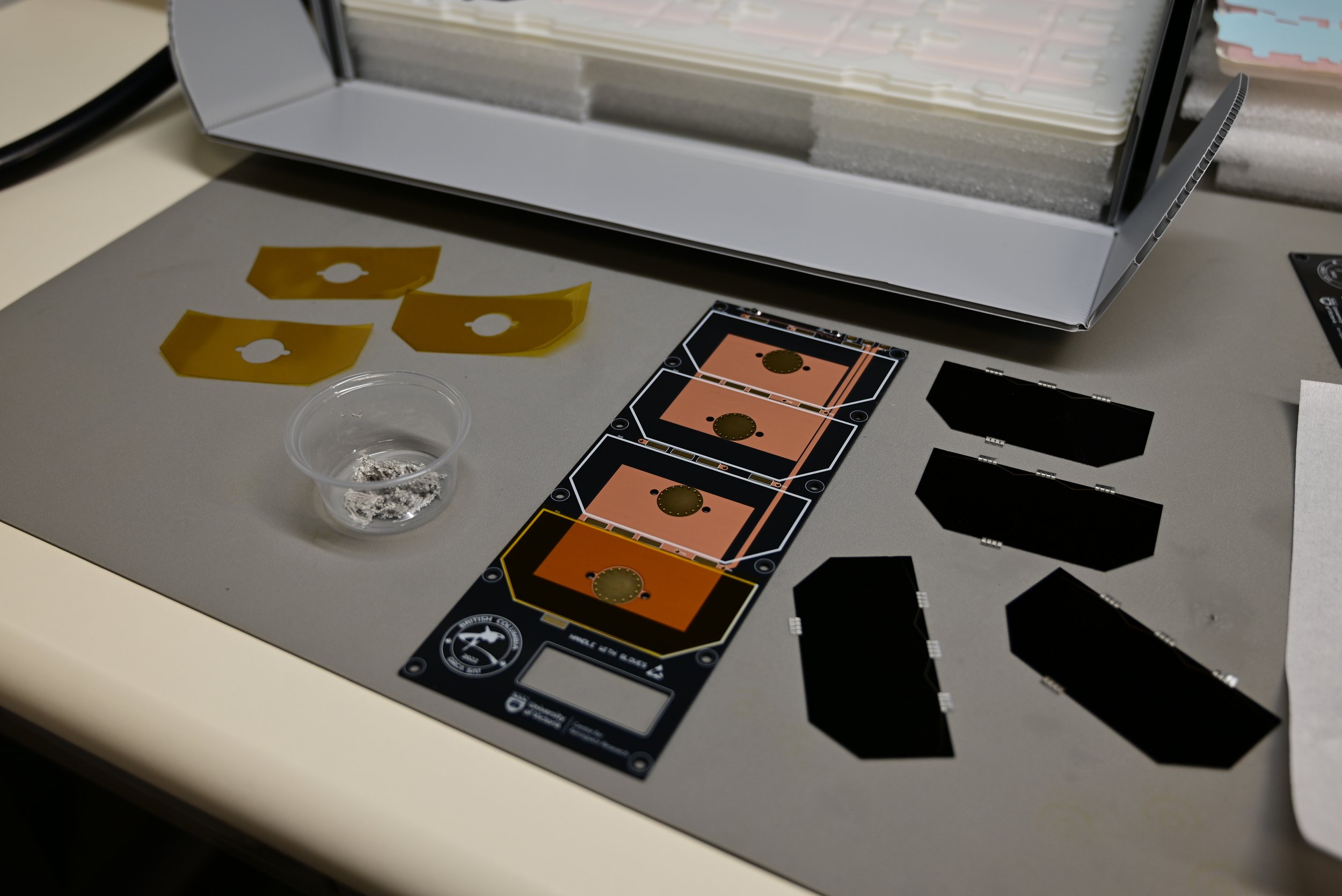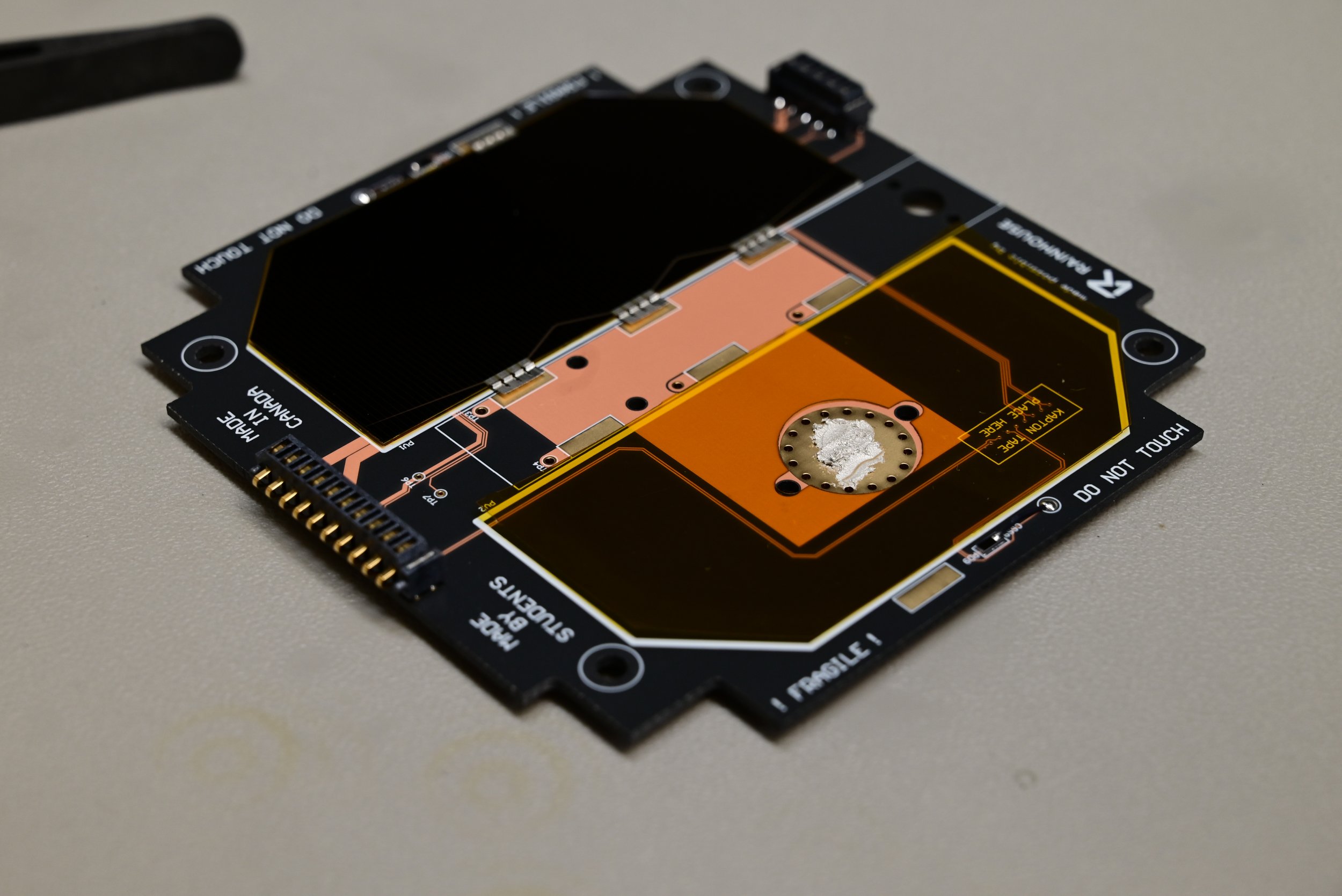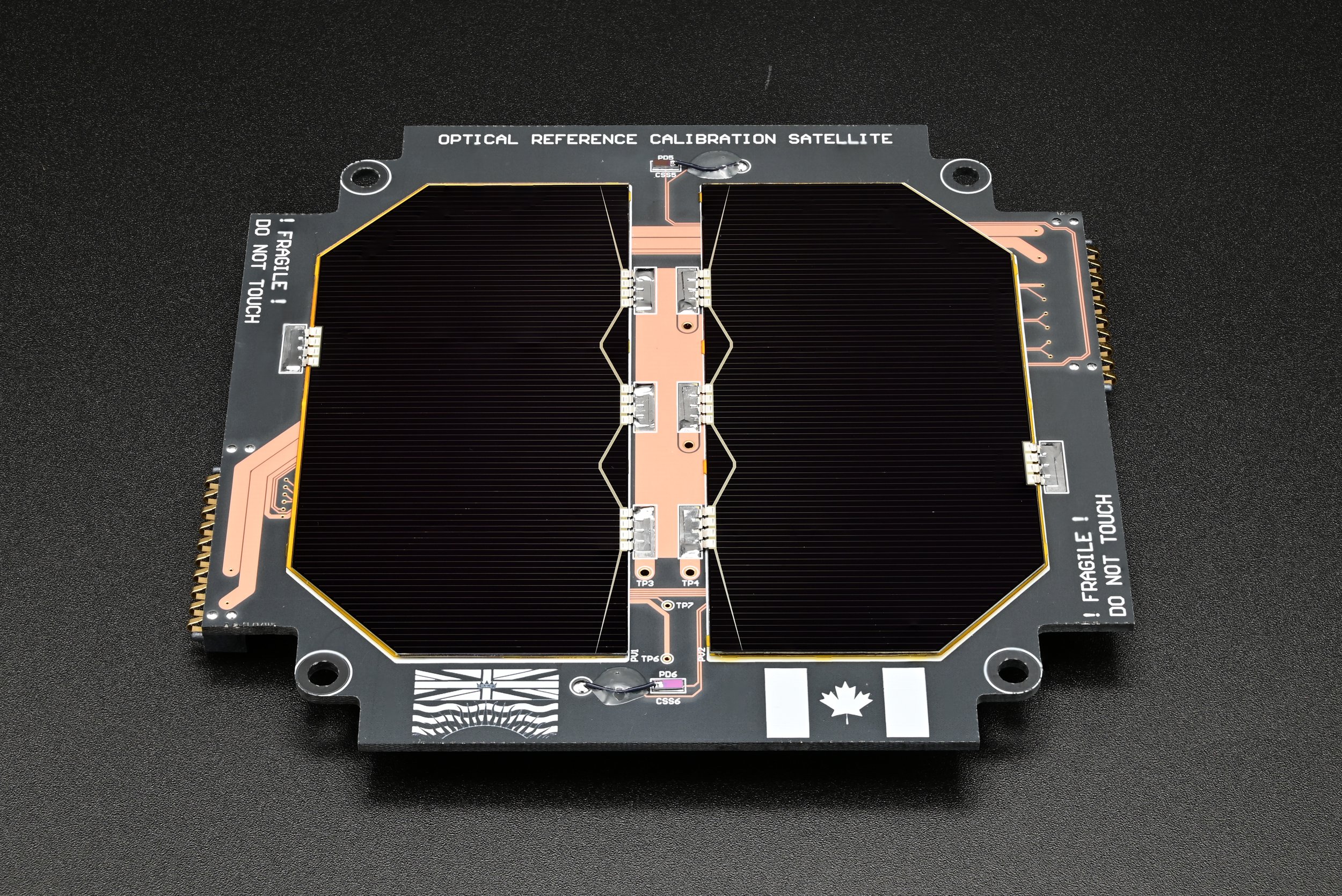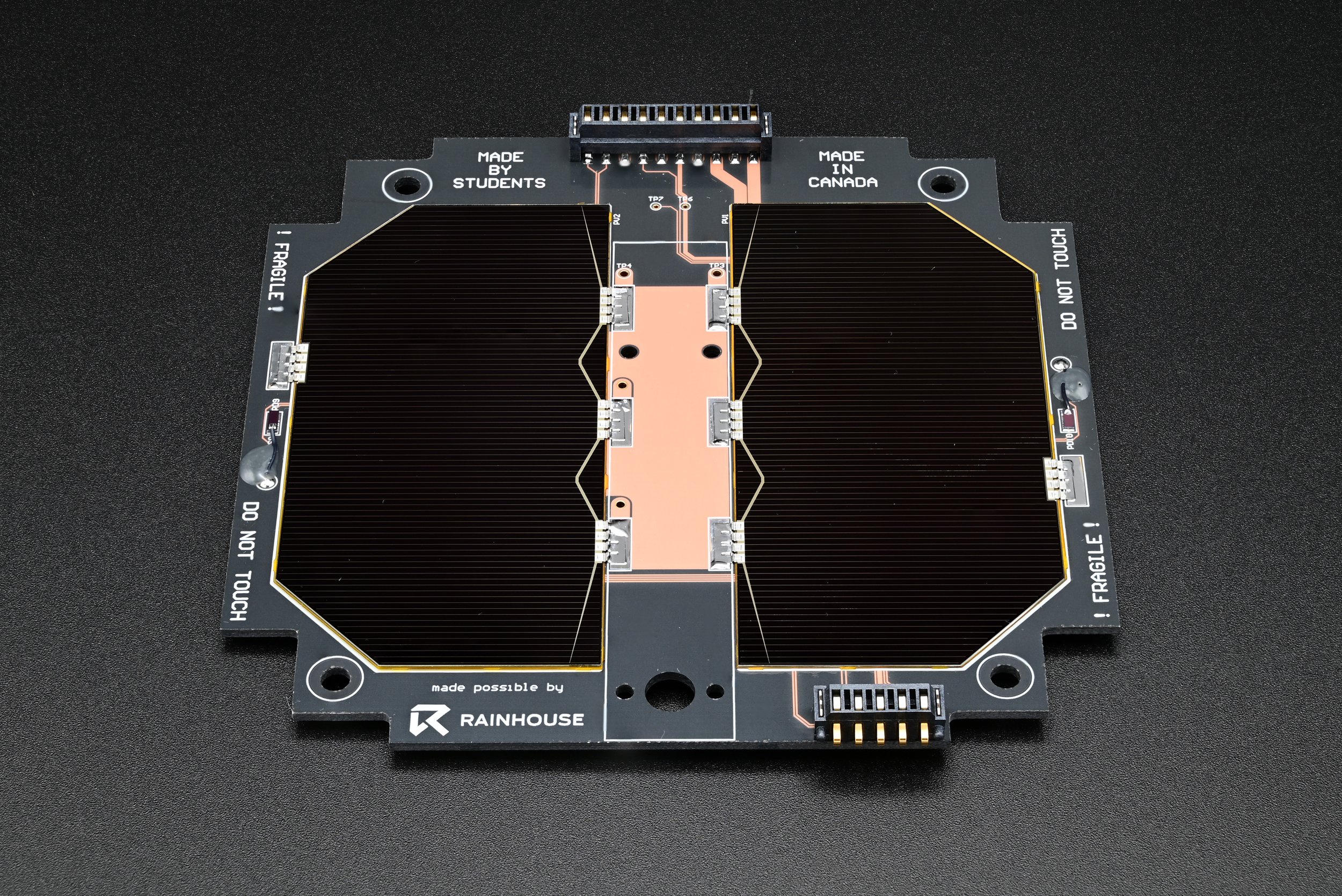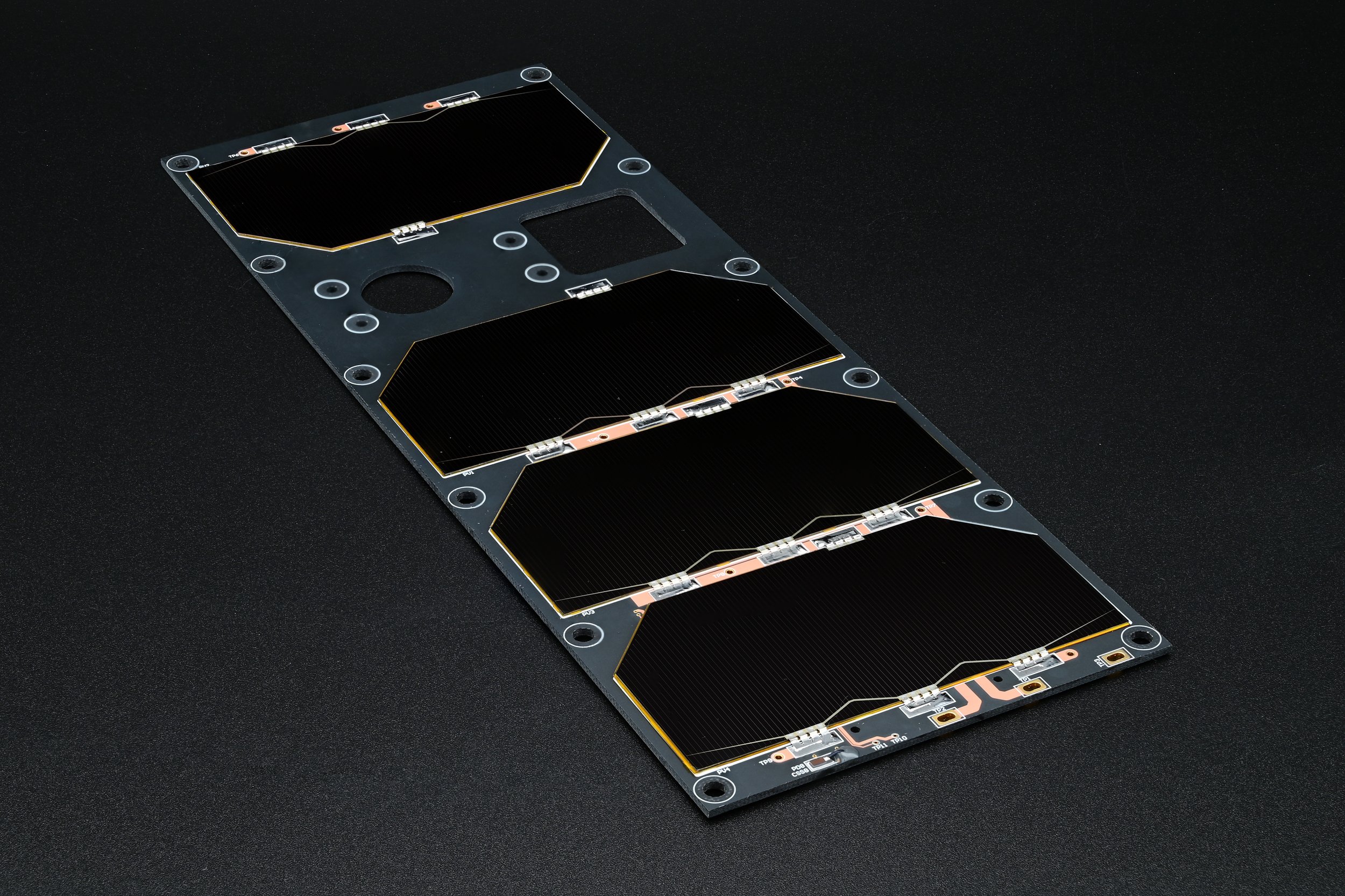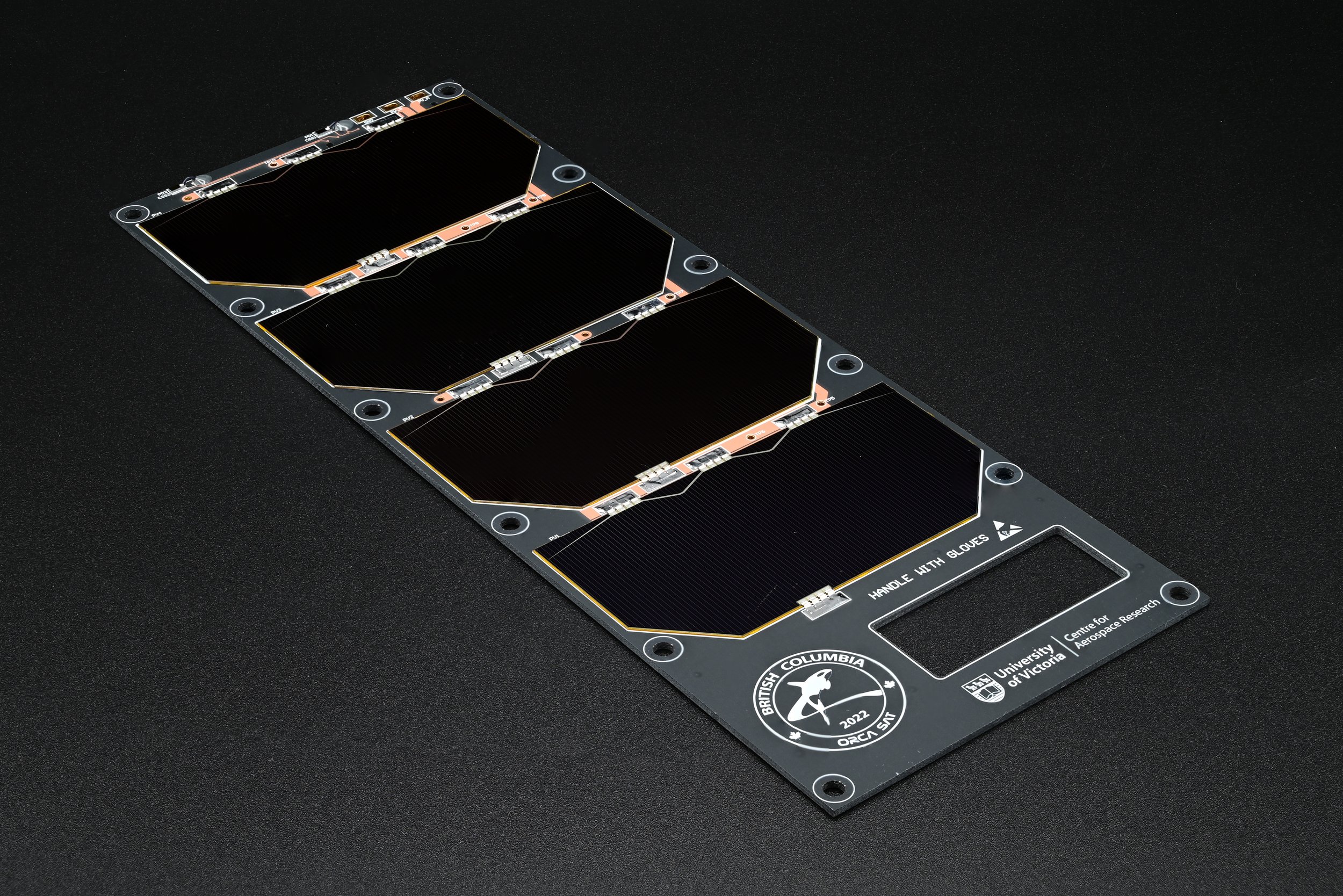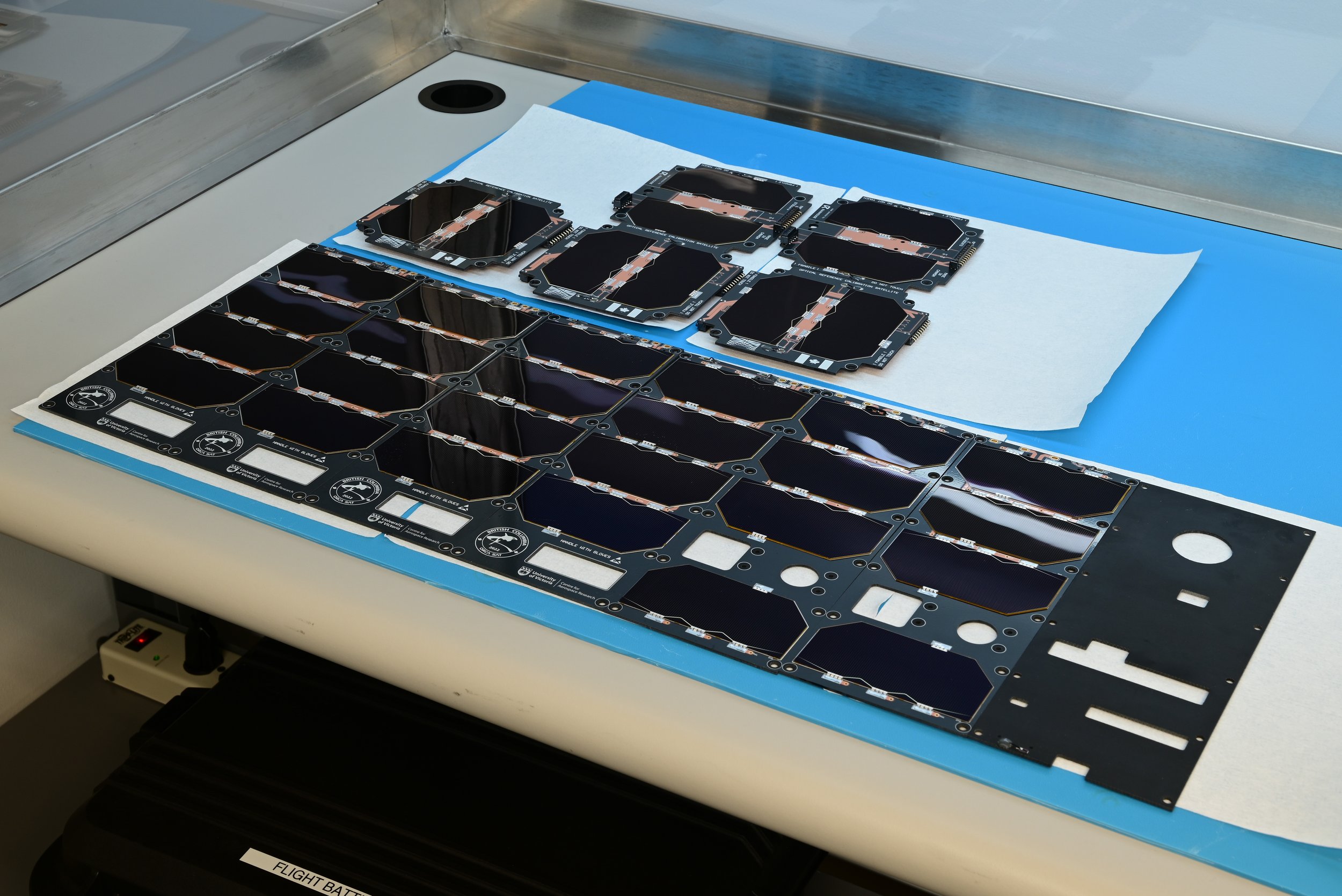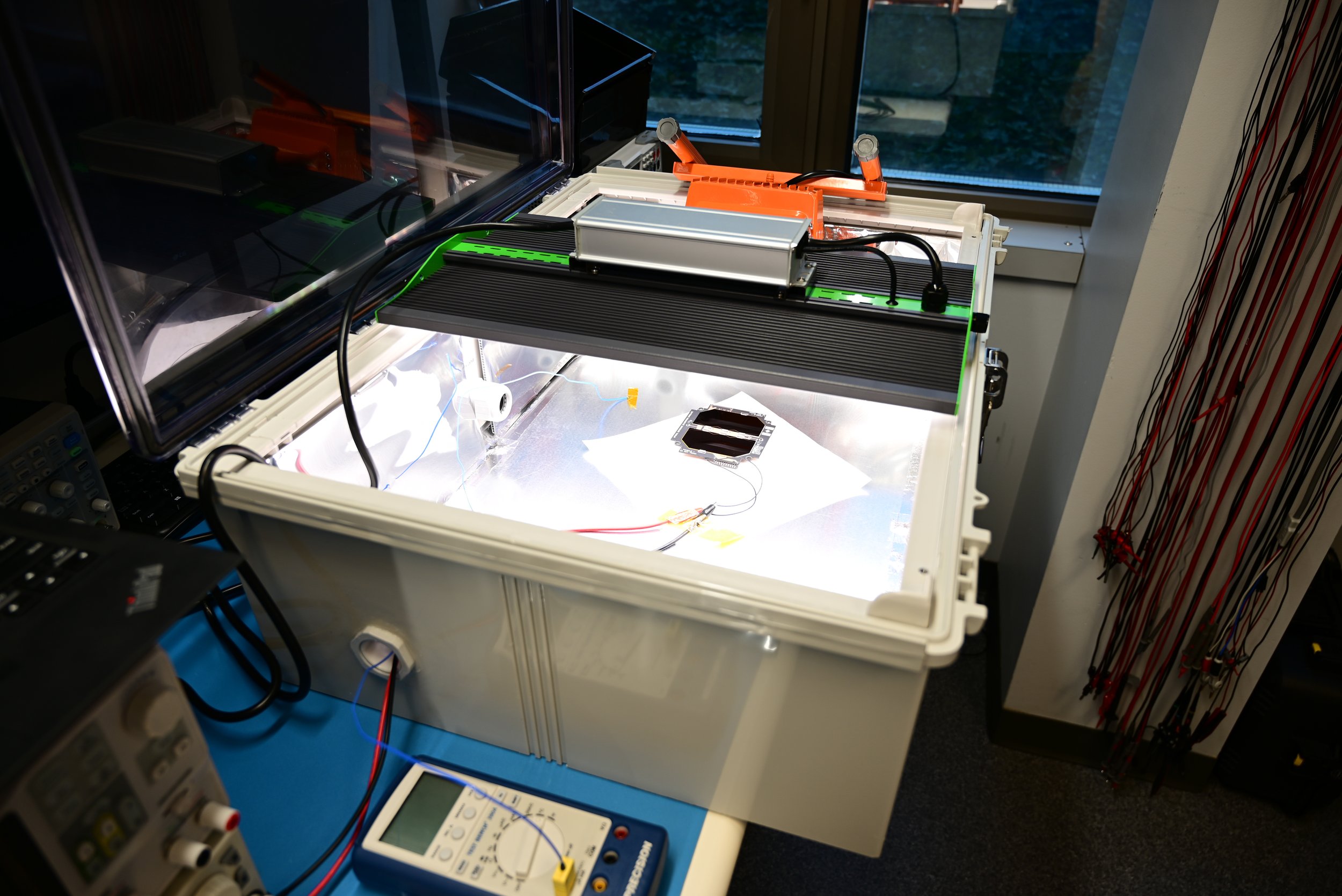Solar Panels
ORCASat has 6 body-mounted panels that make up the exterior of the spacecraft body. 5 of these panels are solar panels, which feature AZUR SPACE triple junction GaAs solar cells. These cells are 30% efficient and produce ~1.2 W each under peak illumination conditions. The spacecraft ram and wake faces each have two solar cells in a 2S configuration for a peak power generation of 2.4 W each. The larger starboard, port, and zenith faces have 4 solar cells each in a 2S2P configuration for a peak power generation of 4.8 W peak. The solar panels also feature photodiodes for coarse sun sensing and temperature sensors monitored by the Electrical Power System (EPS).
The solar cells are extremely thin (280 μm) and have a glass substrate known as coverglass to prevent damage from cleaning and to reduce performance degradation from radiation. They are pretty fragile and the coverglass can be easily cracked by small impacts and bending. The complete underside of the solar cell is the (+) terminal, and the three tabs on the top side are the (-) terminals. The other tab on the top by itself is for the integrated bypass diode. The solar cells are epoxied to the solar panels with a silver conductive epoxy to connect the (+) terminal. The (-) and bypass diode terminals are then soldered down to the solar panel.
Once assembled, the solar panel is thoroughly cleaned with a lint-free cleanroom wipe and 99% isopropyl alcohol. The solar panels are then illuminated with a combination of a halogen and LED grow lamp to confirm they produce approximately the correct power and have no assembly issues.

